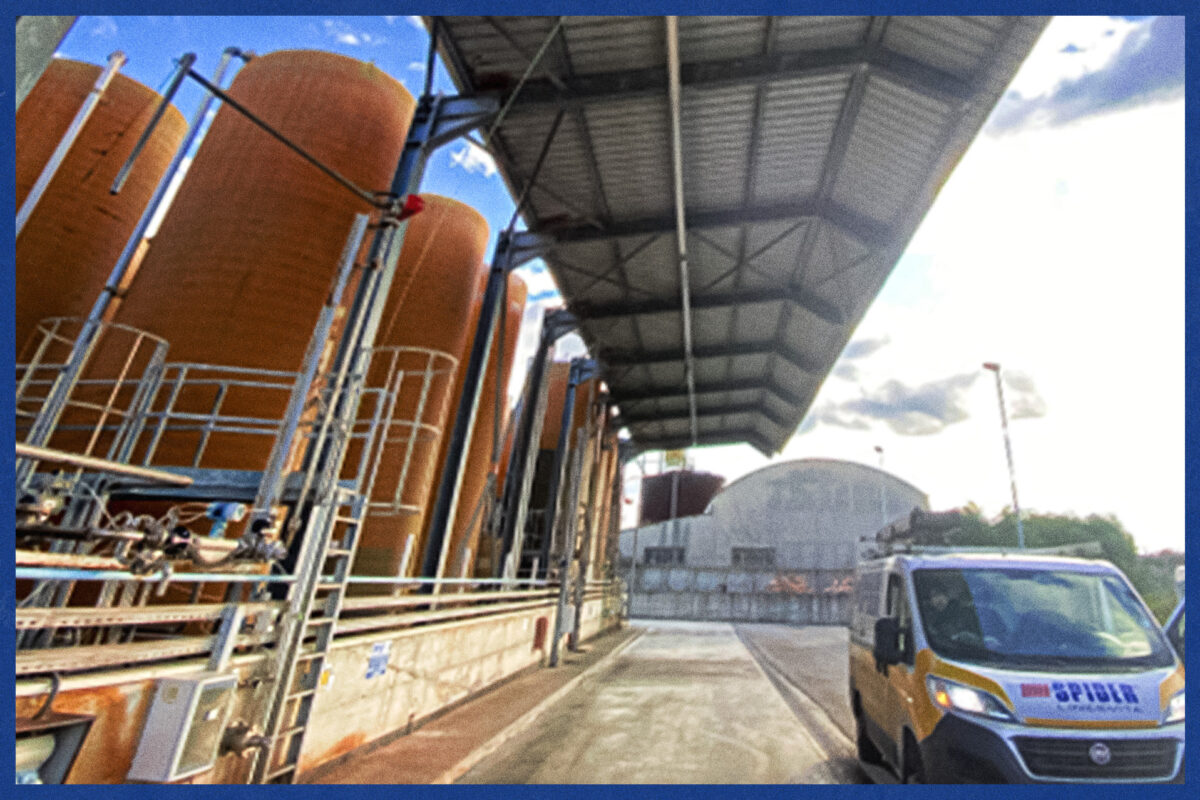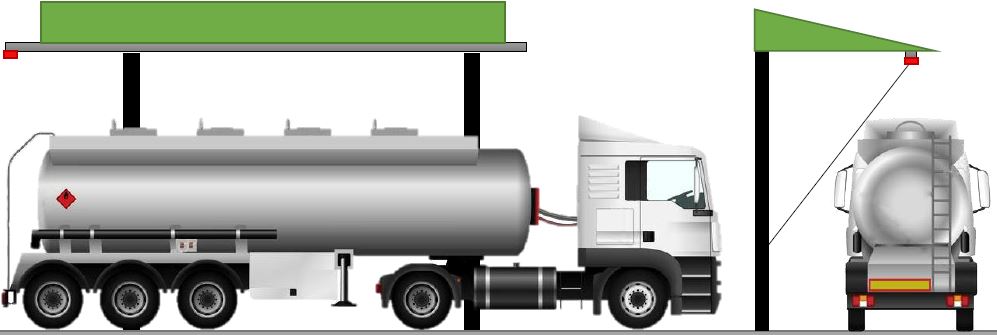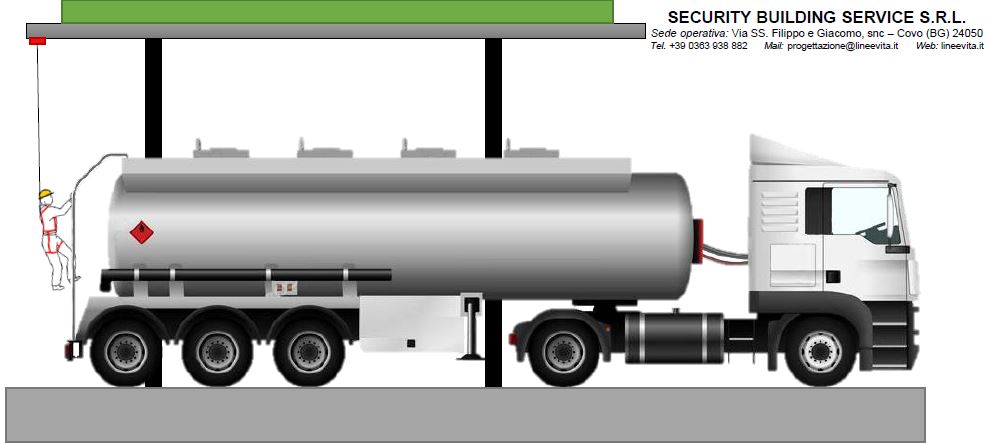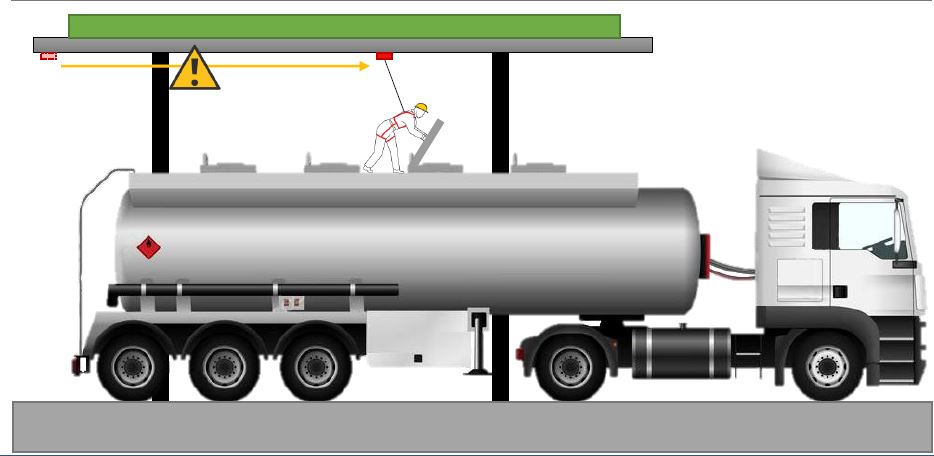


How to ensure the safety of operators during the loading and unloading operations of tankers and articulated vehicles?
In Italy, Legislative Decree No. 81 of 2008, known as the “Consolidated Act on Safety at Work,” aims to establish uniform protection standards for workers throughout the national territory. This applies to all sectors, including loading and unloading operations at loading bays.
The loading and unloading bays for tankers and articulated vehicles exceed 4 meters in height, representing a serious risk of falling for operators during loading and unloading operations. Therefore, it is necessary to provide adequate prevention and protection measures against falls from height in accordance with current regulations.
SPIDER can offer you custom design, turnkey supply, installation, and maintenance of fall protection systems such as lifelines or fall protection systems for loading bays.
If you have all the necessary information and documents click here
Richiedi maggiori informazioni
Chiedi maggiori informazioni
In the realm of high-altitude work, reliability and safety are paramount. For this reason, choosing to rely on specialists in the field can represent a tremendous advantage for your company.
When it comes to working at heights, the technical complexity and associated risks are high. Regulatory requirements, risk management, staff training, and the selection and maintenance of equipment – these are all aspects that require specific and up-to-date expertise.
By entrusting specialists, you will not only ensure compliance with current regulations, but you will also benefit from the experience and technical skills that these professionals bring. They are capable of identifying and mitigating risks, properly training your staff, and ensuring that the equipment is always cutting-edge and maintained in optimal conditions.
From a commercial standpoint, investing in safety for high-altitude work is not just a regulatory obligation but a strategic choice. A safe work environment can enhance productivity, reduce costs related to occupational injuries and illnesses, and strengthen your company’s reputation.
In summary, choosing a ‘turnkey’ solution provided by professionals specialized in high-altitude work allows you to focus on your core business, while a team of professionals ensures a safe and regulatory-compliant work environment. It’s an investment that pays off in terms of peace of mind, efficiency, and corporate reputation.
I rischi principali su baie di carico, autocisterne, container e autotreni
Cadute: Questo è il rischio più ovvio e potenzialmente il più pericoloso. Le cadute possono avvenire a causa di superfici scivolose, bordi non protetti, o semplicemente perdita di equilibrio.
Oggetti caduti: Gli oggetti che cadono da altezze possono causare gravi lesioni ai lavoratori al di sotto.
Lesioni da sforzo: Il sollevamento e lo spostamento di oggetti pesanti in quota può causare lesioni muscolo-scheletriche.
Esposizione agli elementi: Lavorare all’aperto può esporre i lavoratori a condizioni meteorologiche estreme.
Rischi legati all’uso di attrezzature: L’uso di attrezzature di sollevamento o di altre attrezzature pesanti può comportare rischi aggiuntivi.
Rischi chimici: Nel caso di autocisterne, potrebbero esserci rischi legati all’esposizione a sostanze chimiche pericolose.
Rischi legati alla mancanza di ossigeno: Nel caso di container, potrebbe esserci il rischio di ambienti a basso contenuto di ossigeno.
Sicurezza baie di carico – Le fasi del progetto
 Sopralluogo
Sopralluogo
 Progettazione
Progettazione
 Installazione
Installazione
 Certificazione
Certificazione
SPIDERWIKI – Regulations in Italy and Europe Regarding Loading Bays
Working at height regulations are a critical topic, especially in Italy and Europe, encompassing a set of rules designed to ensure worker safety. These regulations may seem complex, but don’t worry, we’re here to help you understand them better!
First and foremost, it’s important to emphasize that these rules have been created with one goal in mind: your safety. When we talk about working at height, we refer to any activity that involves accessing the loading area of a road or rail vehicle or a container, or work done above a tank truck.
These regulations include requirements for training, safety equipment, and standard operating procedures. For instance, you might need to complete a specific training course or use personal protective equipment (PPE) such as safety belts or harnesses.
But how do these regulations apply in practice? And how can they affect your day-to-day work? This is where our team of experts comes in. We’re here to help you navigate through the maze of laws and rules, to ensure that you can work safely and in compliance.
If you’re interested in learning more, or need assistance understanding how these regulations apply to your specific industry or situation, don’t hesitate to contact us. We can provide you with tailored advice, answer your questions, and guide you through the process step by step.
Normativa lavori in quota – Italia
D.Lgs 81/08 – Allegato XXI
Regolamenti Regionali sulle norme di sicurezza per lavori in quota
Normativa tecnica – Italia
UNI 11900:2023 – Attività professionali non regolamentate – Installatore di sistemi di ancoraggio – Requisisti di conoscenza, abilità, autonomia e responsabilità
UNI 11560:2022 – Sistemi di ancoraggio permanenti i n copertura – Guida per l’individuazione, la configurazione, l’installazione, l’uso e la manutenzione
UNI 11578:2015 – Dispositivi di ancoraggio destinati all’installazione permanente -Requisiti e metodi di prova
UNI EN 795/2012 – Dispositivi individuali per la protezione contro le cadute – Dispositivi di ancoraggio. Ancoraggi Puntuali, Ancoraggi Puntuali Mobili, Ancoraggi Lineari Flessibili, Ancoraggi Lineari Rigidi, Ancoraggi Puntuali a Zavorra
Normativa lavori in quota – Europa
Direttiva 2001/45/CE
Direttiva 89/656/CEE (uso Dispositivi Protezione Individuale)
È importante notare che queste Direttive dell’UE sono implementate negli Stati membri attraverso la legislazione nazionale.
Ricorda, le normative specifiche possono variare da un paese all’altro all’interno dell’UE, quindi è importante consultare le leggi locali del tuo paese.
Richiedi maggiori informazioni
Chiedi maggiori informazioni
h3>An Analysis of a Tank Truck in Working Position
Depicted in this image stands the imposing figure of a tank truck, ready to become the stage for the operator on duty. The vehicle’s position has been carefully calibrated beneath the attachment point, ensuring safe and reliable access for the operator, who is about to climb onto the vehicle using the designated accesses
The donning of Personal Protective Equipment (PPE), a critical phase of the process, is executed with utmost care and precision. The operator, meticulously following the instructions from the manuals, performs a thorough series of checks before commencing the ascent. The image clearly illustrates the freedom of movement the operator can utilize once they have reached the working position. The shuttle, in this case, moves parallel to the subject, allowing a wide range of movements and operations.
This is but one of the examples of the systems employed in the complex operations of loading and unloading. A ballet of precision and safety, where every movement is calculated, and every action is the result of careful preparation. Ultimately, it’s an art where safety and efficiency go hand in hand.
Loading Bays from a Business Perspective
Working at height, which includes activities on loading bays, tank trucks, containers, and trucks, may seem a daunting task. However, it is a daily reality for many sectors. And while the challenges are undeniable, the true danger lies in what is not seen: the hidden risks and potential legal and financial costs that can stem from a workplace accident. Think about the possibility of collisions with low ceilings or overhead structures. You might think wearing a helmet is enough, but it does not eliminate the risk. What if a worker slips on a wet or icy surface? Or trips over poorly placed cables or ropes?
Every accident can lead to costly legal actions, a loss of productivity, and ultimately, a damage to your company’s reputation. But most importantly, it can endanger the lives of your workers. Then there are the less obvious dangers, such as electrocution from suspended cables or the severe consequences of suspension trauma, when a worker remains hanging and immobile, risking loss of consciousness and, without timely intervention, even life.
And what about the pendulum effect, which can cause a worker to collide with the ground or other obstacles, or injuries caused by falling loads from above? These are not hypothetical scenarios but real risks that every enterprise conducting work at height must face. And the question you should ask yourself is: are you truly prepared? Deepening the understanding of the risks and investing in preventive measures is not just an ethical choice but also a wise economic decision. A safe work environment reduces the costs related to accidents and occupational illnesses, increases productivity, and enhances your company’s reputation.











